Hillside to the Stars - Page 4
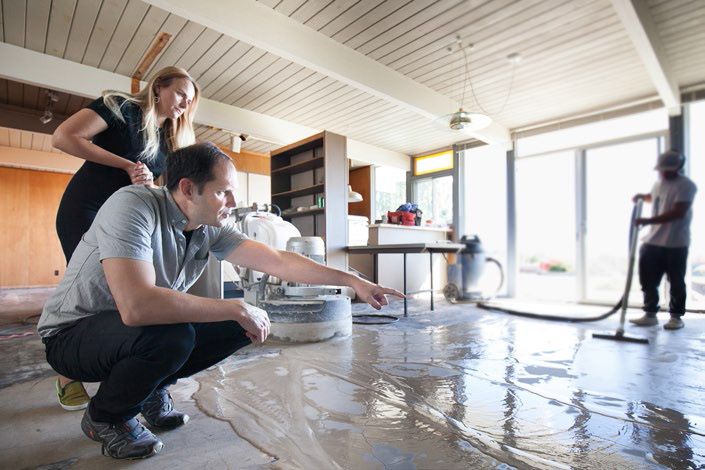 |
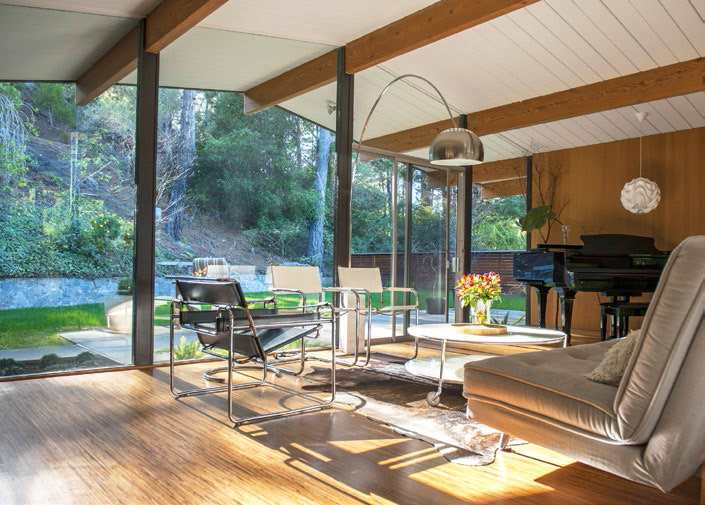 |
|
|
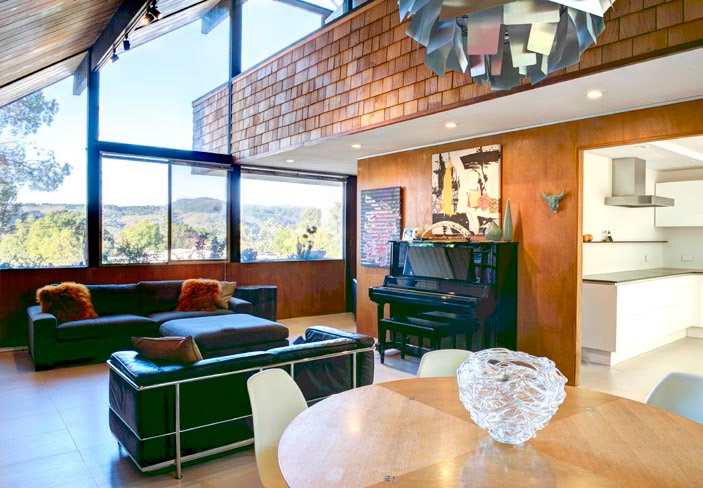 |
|
|
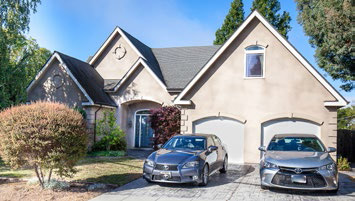 |
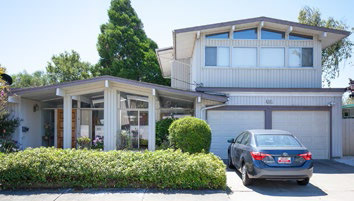 |
|
|
One recently fended-off threat has been worrying Highlanders for years. It would have destroyed what many people most love about their neighborhood—besides their neighbors of course.
Their greenbelt. Liesje Nicolas says the open land that circles the community provides a welcome feeling of isolation and peace.
For more than two decades neighbors have been fighting efforts by the Chamberlain Development Group to fill 99 acres of steep canyon and creek with a varying number of homes. Dorothy Greene, a resident since the '60s, recalls a proposal to build more than 250 homes. By 1998 it was down to 96, but county officials still said no.
Liesje says, "It is a canyon. It's land that was not buildable or Eichler would have built on it."
The Highlands Community Association, led by resident Sam Naifeh, finally negotiated an agreement with the developer and county—11 homes. Three have been built on what had been vacant parcels on Bunker Hill Road, one of the main through roads. Eight more are to come, and neighbors are keeping a sharp eye to make sure the developer adheres to the 24 pages of conditions.
Another parcel of undeveloped land that borders the community is the San Francisco Fish and Game Refuge, otherwise known as the San Francisco Public Utilities Commission Peninsula Watershed.
This beautiful grassland slopes down to Interstate 280 and the Crystal Springs Reservoir, and is part of a 23,000-acre open space surrounding the reservoirs that mark the site of the mighty San Andreas Fault.
Although there are a few trails that make it to the reservoir, and a very popular bike and walking trail, the Sawyer Canyon Trail, that provides views, most of the land is off limits to the public. Many people want to see greater public access.
Still, when it comes to the grassland just below the Highlands homes, the PUC seems a bit schizophrenic. Posted signs warn 'Trespassing, Loitering Forbidden By Law.' But other signs just feet away advise walkers who ignore the no-trespassing signs not to trample native vegetation.
A third chunk of open space adds to the Highlands Greenbelt. This is a ribbon of steep ravine and creek that snakes around the northern section of the Highlands. It was once owned by a developer, who couldn't develop it, so it was deeded to the recreation district in the 1980s.
Some people want it formally opened to walkers, but it would be hard to access, several neighbors say, because it is bordered by private property and by watershed land. There are also concerns about slope stability and fire.
One issue that has been contentious over the years has been whether more needs to be done to preserve the neighborhood's Eichler looks. A recent count found that at least ten percent of the homes—70-plus—have been drastically changed, about 60 with full or partial or attic second stories, and several absolutely transformed or rebuilt from scratch. One has become a classic Tudor.
There are so many houses with inappropriate changes, it's easy for someone touring the tract to miss an important point: many more Eichlers appear essentially intact.
Although the neighborhood originally has CCRs (covenants, codes and restrictions) that allowed for architectural control, they haven't been used in at least 30 years, says Glenn Sennett, a broker who sells many Eichlers here.
Sennett says how original an Eichler is "counts a lot" when it's time to sell. He mentions one home being sold by an out-of-area broker that had been "de-Eichlerized."
"She priced it as though it had the true character of Eichler. It didn't, so it didn't sell," he says. "The Eichler buyers didn't like the style of the house. Just because it was bigger doesn't mean it was worth more."
In the early 2000s a group of residents, including Barry Brisco, urged the county—which governs the unincorporated area—to rezone the neighborhood, with a goal of blocking tall replacement homes and second-story additions.
"There were plenty of second-story additions. Some people were getting alarmed about it. All of a sudden people were looking into your bedroom, and I for one don't want to put up curtains," Brisco recalls.
It was a hard-fought battle, with petition drives, political machinations, and harsh words. The effort failed in large part because "the president, the vice president, all the prominent members of the association" opposed the plan, he says.
In recent years, "there have only been a couple of second-story additions," Brisco says. "It's a little surprising, but it's certainly a welcome surprise," adding, "I'm just happy it hasn't turned into as much of a problem as I thought."
Several residents suggested that's because most new buyers really love the Eichler homes.
"The mid-century modern revival has been the best thing to hit this neighborhood," Feinberg says. "The people buying now are pretty dedicated. For the most part people are keeping them in the Eichler style."
• The San Mateo Highlands is bounded by Polhemus Road to the east, Lexington Avenue and the watershed lands to the west, Laurel Hill Drive and Seneca Lane to the north, and Allegheny Way and Ticonderoga Drive to the south. Besides Eichlers, the neighborhood includes traditional homes built by Whitecliff from the 1960s and some later homes and townhouses, mostly near Polhemus. It's notable that the Highlands has a couple of clusters of original, two-story Eichlers. These were built because of site constraints, and are strategically arranged to preserve privacy.
Photography: Sabrina Huang, Margo Tomaszewska-Richter
- « first
- ‹ previous
- 1
- 2
- 3
- 4




